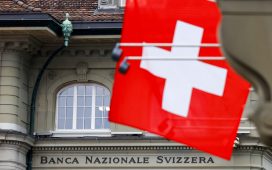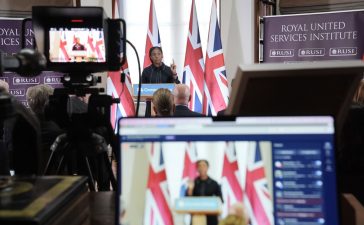
According to the U.S. Department of Labor’s latest inflation report for August, the consumer price index (CPI), a key indicator measuring the cost of goods such as gasoline, groceries, and rent, rose by 2.5% over the past year for the US as a whole.
This marks a continued slowdown in inflation, but regional disparities remain significant, as per a report by Fox Business.
Northeast Sees Highest Inflation Rates
The Northeast is currently the most affected region, with an inflation rate of 3.4% in August compared to the previous year, the highest of the four regions analyzed by the Bureau of Labor Statistics (BLS).
Also Read: Snap poll after U.S. presidential debate says Harris won and she is confident to lead America
Within this region, the Middle Atlantic states recorded a 3.4% inflation rate, while New England experienced a slightly lower rate of 3.3%. These figures are notably above the national average, reflecting the financial strain faced by residents in these areas, according to the report by Fox Business.
Midwest Inflation Also Above Average
Similarly, the Midwest recorded an inflation rate of 2.6% in August, also exceeding the national average. Chicago, the region’s largest city, reported the highest inflation among all metropolitan areas in the U.S., with a staggering 3.8% inflation rate.
Detroit followed closely with an inflation rate of 3.5%. This suggests that consumers in these areas are paying significantly more for everyday necessities compared to other parts of the country, as per a report by Fox Business.
South and West Experience Lower Inflation
In contrast, the South and West regions fared better in terms of inflation, with the South recording an inflation rate of 2.3% and the West slightly lower at 2.2%.
Within the Southern region, cities like Atlanta and Houston reported relatively low inflation rates of 1.7%. Miami, however, saw inflation rise to 2.6%, just above the national average.
The West also saw varying levels of inflation across different cities. Seattle recorded the highest inflation rate in the region at 3.1%, while cities like Los Angeles and San Francisco saw rates of 2.9% and 2.7% respectively. In contrast, urban Alaska experienced the lowest inflation rate in the West at just 1.5%.
Also Read : Where is Melania? Donald Trump’s wife missing again from key events
Key Cities Impacted by Rising Prices
Apart from Chicago, several other major cities are grappling with inflation rates higher than the national average. New York City’s inflation rate reached 3.7%, making it the second-highest inflationary city in the U.S. Philadelphia saw a 3.4% increase, while Baltimore followed at 3.0%.
These rising prices are placing additional financial pressure on consumers living in these metropolitan areas, especially in sectors like housing and utilities
FAQs
What is the US current inflation rate?
The annual inflation rate has dropped to 2.5%, the lowest level since February 2021.
Why is inflation so high in the US?
As the labor market tightened in 2021 and 2022, core inflation increased due to a rising ratio of job vacancies to unemployment. This ratio helps gauge wage pressures, which subsequently affect the prices of goods and services. As workers negotiate for higher wages, companies often respond by raising prices.
Disclaimer Statement: This content is authored by a 3rd party. The views expressed here are that of the respective authors/ entities and do not represent the views of Economic Times (ET). ET does not guarantee, vouch for or endorse any of its contents nor is responsible for them in any manner whatsoever. Please take all steps necessary to ascertain that any information and content provided is correct, updated, and verified. ET hereby disclaims any and all warranties, express or implied, relating to the report and any content therein.









